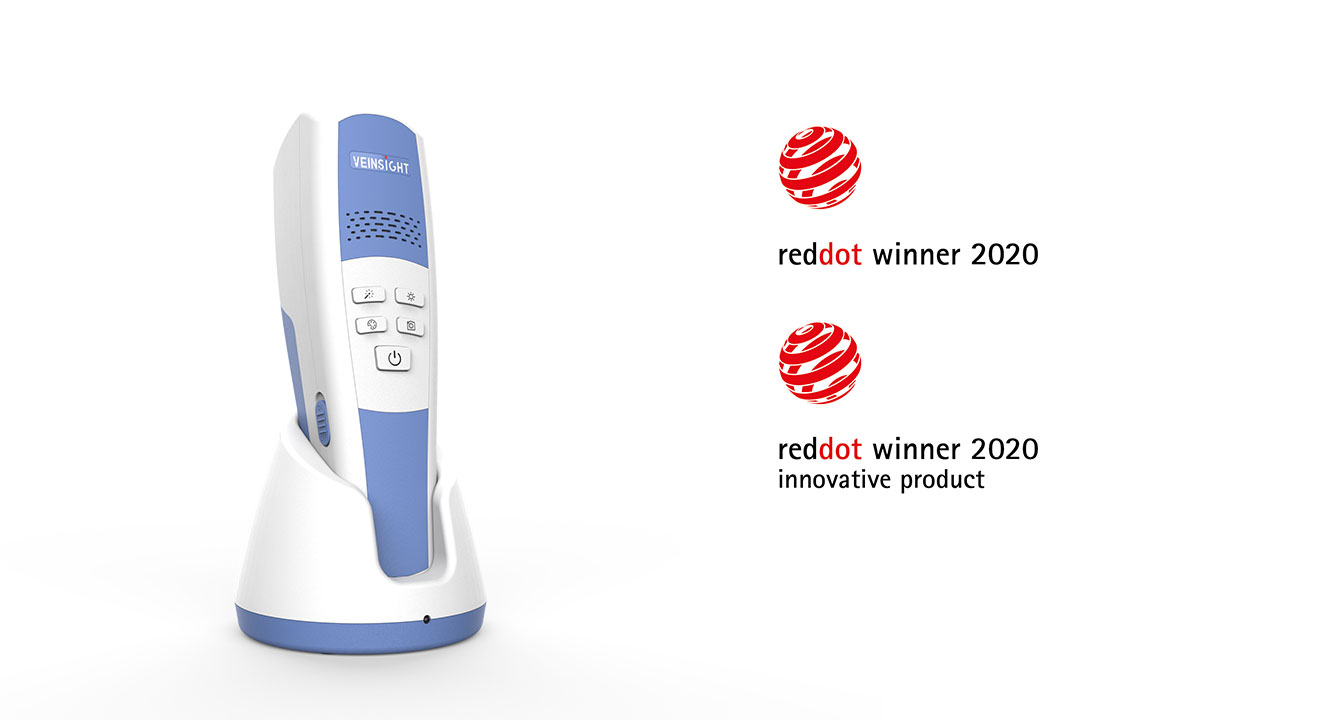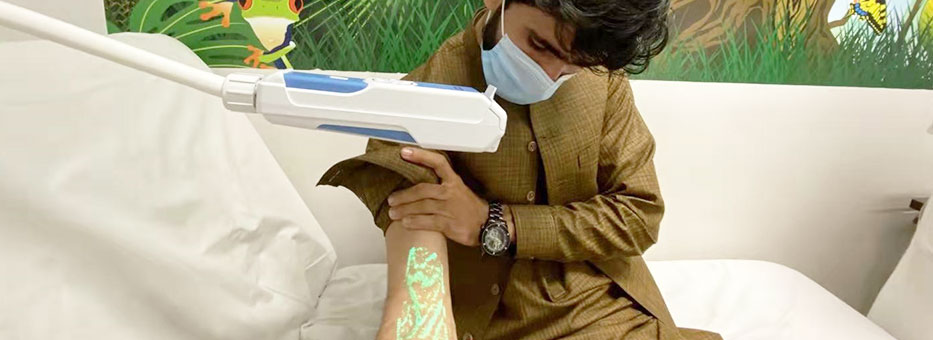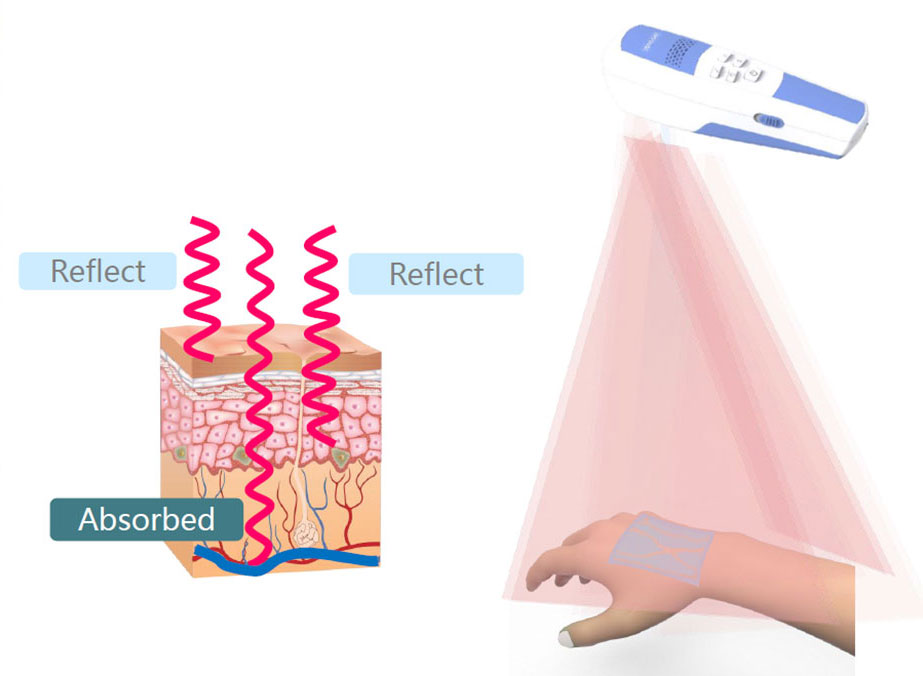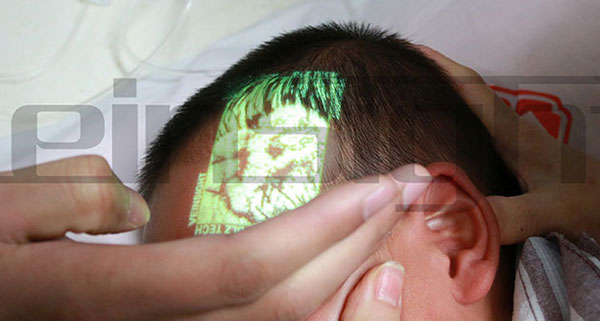
Vein Finder VS500 ---Germany Red Dot Winner 2020
VeinSight™ Vein Finder---VS500 of BLZ Medical won the Germany Red Dot Design award.

Peripheral venous puncture is one of the most common and widespread medical procedure performed on patients. However, there are still some vein access challenges for this common procedure. Therefore, nowadays how to solve these problems becomes an important question. Infusion Nurses Society (INS) recommended in Infusion Therapy Standards of Practice 2016 the use of the vascular visualization technology for vascular access device (VAD) insertion, which could increase the success with peripheral cannulation and decrease the need for central vascular access device(CVAD).
Medical personnel may meet patients with different vascular conditions, and there are many factors that may lead to failure of venipuncture. To begin with, before the procedure, clinicians who are lack of experience or skills couldn’t evaluate accurately vessel conditions including appropriate vessel, size, depth, location and potential complications etc., so it's difficult for them to perform actions. Even the procedure is successful, some patients have poor vascular conditions or poor peripheral circulation, resulting in slow or no blood return. The inexperienced nurse may consider the venipuncture as a failure and try to do another attempt. Of course, the fixation methods after successful insertion are also vital, which may lead to displacement of needle, extravasation of the drug solution etc. Besides that, variant scenes, like crying babies or angry patients may produce more mental stress for nurses, which increase failure possibilities.
However, we couldn’t deny that difficult venous access is one of the most important reasons. First of all, the bad vascular condition may increase difficulties of insertion. For example, children’s vessels are usually small, narrowing, and deeply-located, the elderly possesses usually poor blood filling. And then, the invisibility of vessels caused by individual differences like fatty tissue or skin tone bring challenges to medical personnel. Furthermore, some diseases may lead to loss of peripheral venous access (PVA). For example, reduced vessel options due to blood loss, oncology, dehydration, hypertension etc.
VeinSight™ vein finder adopts the Near-infrared (NIR) technology to detect veins. It projects harmless near infrared light onto skin, the light will be absorbed by the hemoglobin (oxygen-carrying protein) within blood so there is a reduced amount of light reflection from the veins, but the light will be totally reflected by surrounding tissue. Differences light absorption rate of blood and body superficial tissue could be captured and analyzed. And then through the biological image processing system and identification technology, the device could map the image accurately on the surface of the skin, which makes it possible to visualize the vein in real time.
Besides, VeinSight™ vein detector use a certain wavelengths of DLP© projection technology, the infrared light source will not generate heat or harmful radiation, it is safe and reliable, which will cause no direct harm to the human eyes or any other parts; there is no direct contact with the patients when using the instrument, so it can avoid the risk of cross contamination.

Vein finder light could satisfy not only the basis demands by projecting the map of vessels on surface of skin, but also provide more convenience to medical personnel. The series of vein finder are equipped different windows sizes, brightness and color, which could meet the needs of different environments and different patients. The inverse mode is useful for the Dark-skinned patients whose vein may not be visible. The fine mode who represents stronger enhancement pattern is suitable for some difficult-to-find vein such as the obesity or children whose vein may be hard to track.
VeinSight™ Vein finder could help locate vein position, and observe vein size, vein direction and venous sinus. Before puncture assessment, vein viewer is capable to assist nurses to perform pre-puncture assessment, to check filling degree of blood in veins. During the procedure, medical personnel may observe flowing condition of monitored medical solution in veins and even after insertion, the device could help to judge whether there is a hematoma.
Vein light could be used in variant departments, like pediatric, oncology, radiology, emergency, geriatrics etc., wherever the clinicians need to locate the vein and check the vascular situation. Different from conventional methods that we could only find veins by observing or touching, modern medical device with the help of vein vizualisation technology increases significantly the first-attempt successful rate and vein puncture efficiency. At the same time, target vein finding time and medically unnecessary PICC will decrease. When patients feel more satisfied, the reputation of hospital or clinic will increase naturally.
Kanipe W, Shobe K, Li Y, Kime M, Smith-Miller CA., Evaluating the Efficacy and Use of Vein Visualization Equipment Among Clinical Nurses in an Intermediate Care Environment.J Infus Nurs. 2018 Jul/Aug;41(4):253-258. doi: 10.1097/NAN.0000000000000286. PMID: 29958262.

VeinSight™ Vein Finder---VS500 of BLZ Medical won the Germany Red Dot Design award.

Children’s vessels are usually small, narrowing, and deeply-located, which cause many problems for the intravenous injection.
Facebook Page: VeinSight
YouTube Channel: Vein Finder VeinSight
©2015-2021 BLZ Technology Inc. All rights reserved.
ICP证:鄂ICP备15014901号